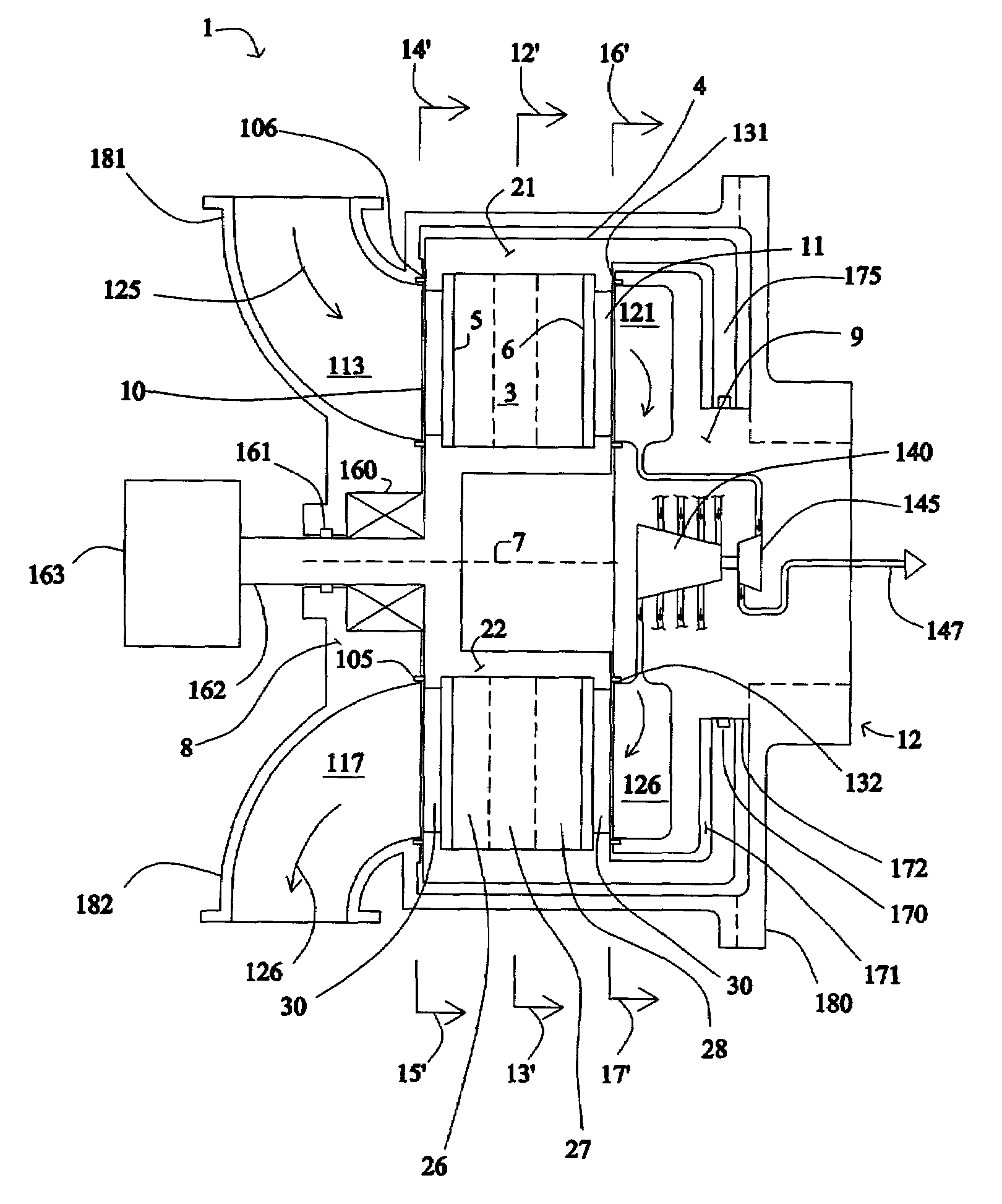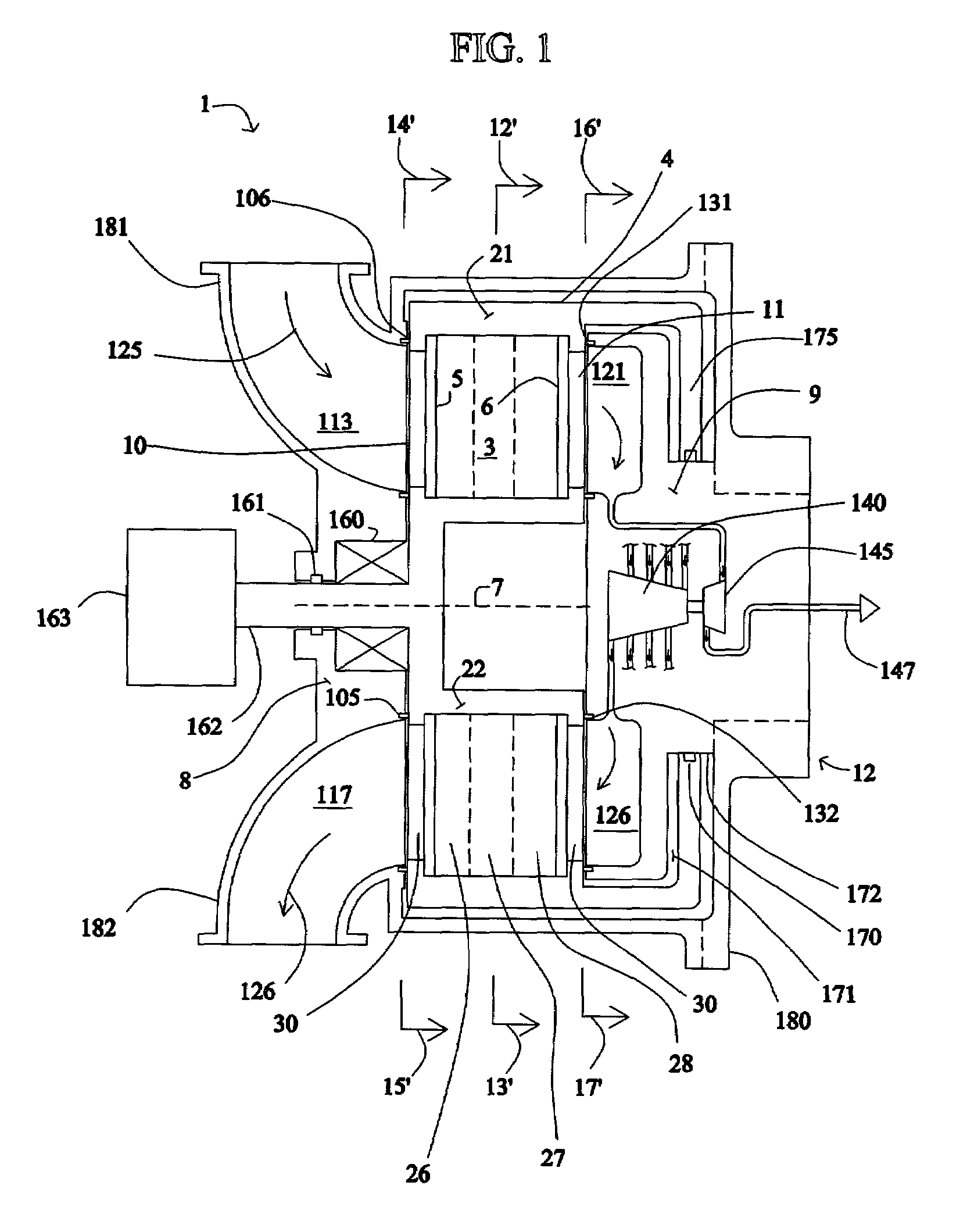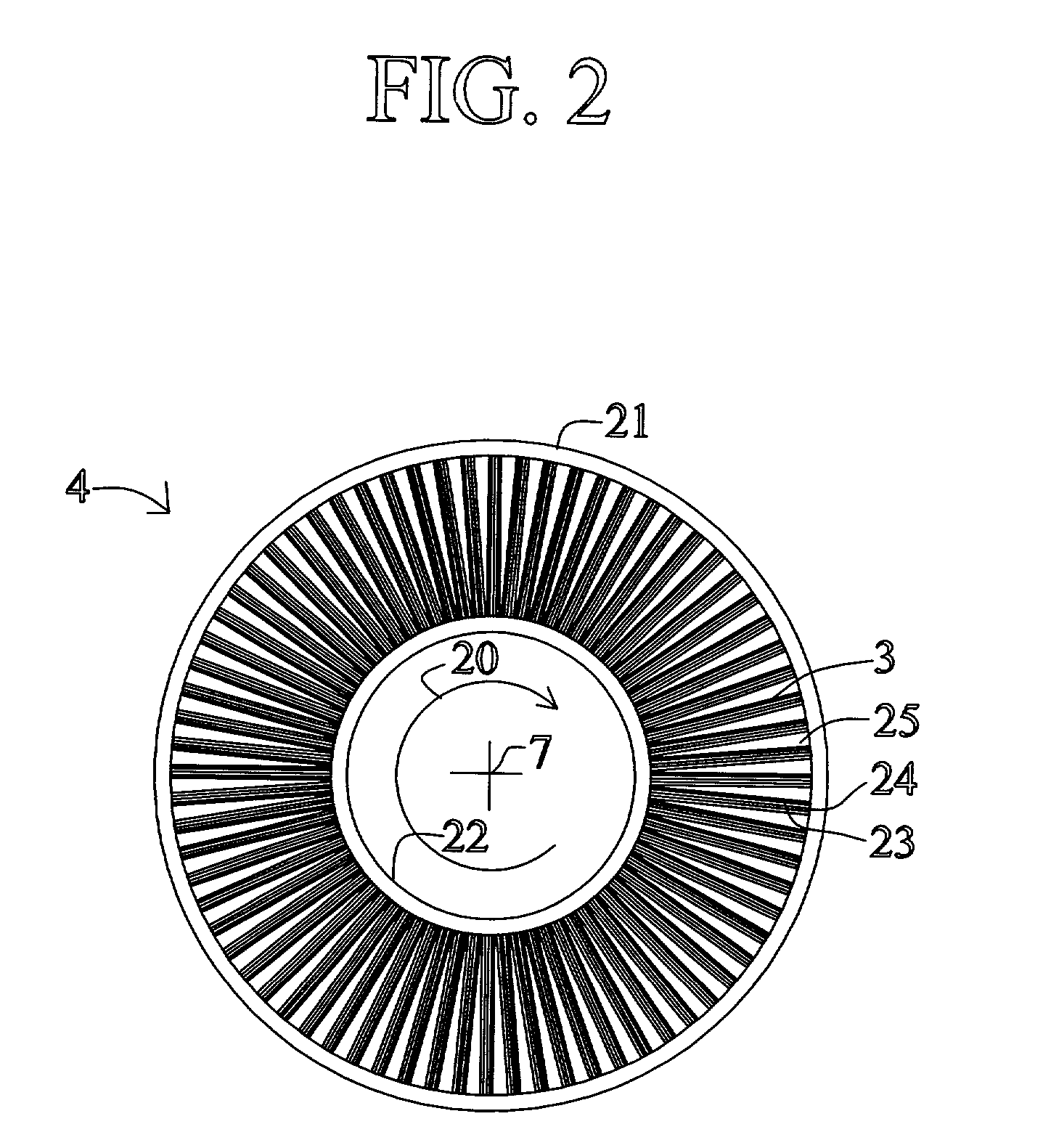Systems and processes for providing hydrogen to fuel cells
a fuel cell and electrical generation technology, applied in the direction of other chemical processes, sustainable manufacturing/processing, separation processes, etc., can solve the problems of inability to tolerate hydrogen, large technical and economic barriers, and large stack so as to maximize the overall energetic efficiency of energy conversion and minimize the size of costly fuel cell stacks
- Summary
- Abstract
- Description
- Claims
- Application Information
AI Technical Summary
Benefits of technology
Problems solved by technology
Method used
Image
Examples
Embodiment Construction
FIGS. 1–5
[0061]One embodiment of an oxygen-enrichment rotary PSA module for use with the described methods and systems is described below in connection with FIGS. 1–5B, but the same or similar rotary PSA module configuration could be used for hydrogen enrichment (i.e., separation) in the disclosed electrical current generating systems. As used herein, a “rotary PSA” includes, but is not limited to, either a PSA wherein the adsorbent bed rotates relative to a fixed valve face or stator or a PSA wherein the valve face or stator rotates relative to a fixed adsorbent bed.
[0062]FIG. 1 shows a rotary PSA module 1, which includes a number “N” of adsorbers 3 in adsorber housing body 4. Each adsorber has a first end 5 and a second end 6, with a flow path therebetween contacting a nitrogen-selective adsorbent (for oxygen enrichment). The adsorbers are arrayed about axis 7 of the adsorber housing body. The housing body 4 is in relative rotary motion about axis 7 with first and second functiona...
PUM
| Property | Measurement | Unit |
|---|---|---|
| temperature | aaaaa | aaaaa |
| operating temperatures | aaaaa | aaaaa |
| operating temperatures | aaaaa | aaaaa |
Abstract
Description
Claims
Application Information
 Login to View More
Login to View More - R&D
- Intellectual Property
- Life Sciences
- Materials
- Tech Scout
- Unparalleled Data Quality
- Higher Quality Content
- 60% Fewer Hallucinations
Browse by: Latest US Patents, China's latest patents, Technical Efficacy Thesaurus, Application Domain, Technology Topic, Popular Technical Reports.
© 2025 PatSnap. All rights reserved.Legal|Privacy policy|Modern Slavery Act Transparency Statement|Sitemap|About US| Contact US: help@patsnap.com



